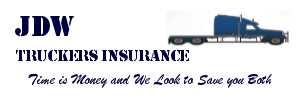Trucking Physical Damage Insurance (PD)
Physical damage coverage is a crucial component of commercial truck insurance. It provides protection for your commercial vehicles against various types of physical damage, including damage from accidents, collisions, vandalism, theft, and other perils. This coverage is essential for safeguarding your investment in your trucks and ensuring that you can quickly get back on the road in the event of damage or loss.
Key Points about Physical Damage Coverage:
- Types of Coverage: Physical damage coverage typically includes two primary components:
- Collision Coverage: This portion of the coverage pays for damages to your commercial truck resulting from collisions with other vehicles or objects. It covers repair or replacement costs, up to the policy’s limits, minus the deductible.
- Comprehensive Coverage: Comprehensive coverage provides protection for damages to your commercial truck that occur due to non-collision events. This can include theft, vandalism, fire, natural disasters, falling objects, and more.
- Deductibles: Like other insurance coverages, physical damage coverage often comes with a deductible. The deductible is the amount you must pay out of pocket before your insurance coverage kicks in. Higher deductibles can lead to lower premiums but may require you to pay more upfront in the event of a claim.
- Coverage Limits: Commercial truck insurance policies specify the maximum amount the insurance company will pay for physical damage repairs or replacement. It’s important to choose appropriate coverage limits that reflect the value of your vehicles.
- Age and Value of Vehicles: The age and value of your commercial trucks can impact your physical damage insurance rates. Newer and more valuable trucks typically result in higher premiums because the cost of repairing or replacing them is higher.
- Coverage Extensions: Depending on your needs, you can often extend physical damage coverage to include additional protections, such as glass coverage for windows, refrigeration breakdown coverage, and more. These extensions can be tailored to your specific requirements.
- Financing Requirements: If you have a commercial truck loan or lease, your lender may require you to maintain physical damage coverage on the vehicle until the loan or lease is paid off. This is to protect their interest in the vehicle.
- Loss Settlement Options: In the event of a covered claim, you may have different loss settlement options, including actual cash value (ACV) and agreed value. ACV takes into account depreciation, while agreed value is a predetermined value agreed upon by you and the insurance company when you purchase the policy.
- Claims Process: In the event of an accident or covered event, you should promptly report the claim to your insurance provider. The insurer will assess the damage, estimate repair costs, and arrange for repairs or replacement, depending on the extent of the damage.
- Combined Policies: Some commercial truck insurance policies bundle physical damage coverage with other coverages, such as liability insurance and cargo insurance, for convenience and potentially cost savings.
- Safety and Security Measures: Implementing safety and security measures for your commercial trucks, such as installing anti-theft devices, can help reduce the risk of theft or vandalism and may lower your insurance premiums.
In conclusion, physical damage coverage is a vital part of commercial truck insurance, protecting your investment in your vehicles from a wide range of physical perils. It’s essential to carefully assess your insurance needs, choose appropriate coverage limits and deductibles, and work with an experienced insurance provider who specializes in commercial trucking insurance to tailor a policy that meets your specific requirements while staying within your budget. Adequate physical damage coverage ensures that your trucks can be repaired or replaced promptly, allowing you to minimize downtime and continue your operations in case of damage or loss.
